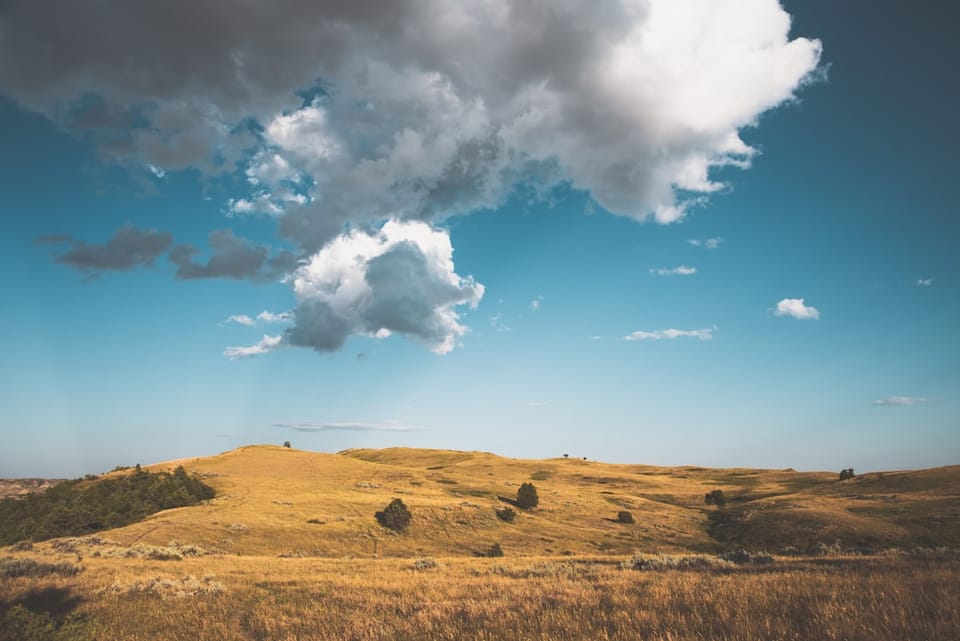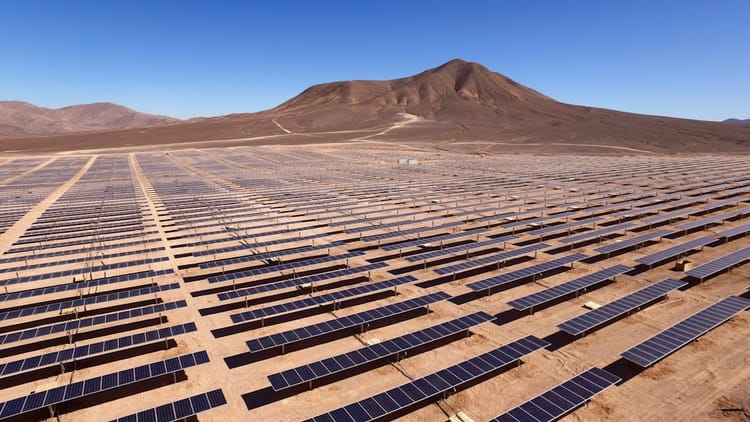Summary of the Resource Management Plans that could be scrapped by Congress's CRA - North Dakota, Central Yukon (AK), PRB (MT)

September 12, 2025
Michael Khamis - The Conservation Current
michael@conservationcurrent.com
Summary:
- If a Congressional Revew Act (CRA) disapproves it could reasonably set precedent for more Resource Management Plans (RMP) repeals
- Keeping RMPs in place creates conservation value: keeping big, wild country intact—healthy migrations, functioning watersheds, resilient sagebrush/prairie and tundra ecosystems. (Central Yukon Areas of Critical Environmental Concern (ACECs)/core habitat; PRB no-new-federal-coal; ND water-source protections.)
- Keeping RMPs in place means real benefits for hunters, anglers, and recreationists. Better access and opportunity where backcountry settings and wildlife productivity persist (Backcountry Conservation Areas (BCAs)/Special Recreation Management Areas (SRMAs) in Alaska; reduced new surface coal footprints in PRB; ND stipulations that temper disturbance around key water resources).
North Dakota Statewide RMP (BLM surface & minerals, statewide)
What it currently protects
- Governs ~58,500 acres BLM surface and ~4.1 million acres federal mineral estate. Among the most cited provisions: closes ~213,100 acres (≈44%) of federal mineral estate to new oil & gas leasing, with the rest open under No Surface Occupancy (NSO)/Controlled Surface Use (CSU)/Timing Limitations (TL) stipulations; tightens coal availability with over ~1.0 million acres managed unacceptable for further consideration for federal coal leasing under the selected alternative. Source: Federal Register
When it was finalized - Record of Decision (ROD) signed Jan. 8, 2025; notice Jan. 15, 2025.
Why conservationists care
- Targeted closures/stipulations steer drilling away from low-potential and drinking-water source areas, which helps limit fragmentation and pressure on prairie pothole wetlands, riparian corridors, and big-game winter ranges, while still allowing development elsewhere under tighter sideboards. Importantly, BLM’s Final Environmental Impact Statement (FEIS) shows little projected change in total wells/production versus no-action. ie., access protections without major production loss. Source: BLM PDF
Stakeholders
- BLM; State of North Dakota (and Attorney General); tribes; counties; oil, gas & coal operators; ranchers/grazing permittees; hunters/anglers & conservation groups; local communities. (See FEIS and protests.) Source: Eplanning BLM PDF ND
Money & policy angle Congress cites
- Critics argue the RMP “closes” ~99% of federal coal and ~213k acres (44%) of fluid minerals, claiming lost future lease revenues. Supporters note the closures are in low-potential/drinking water areas and FEIS projections show nearly the same well counts/production as no-action. Onshore royalties are split roughly half to states; Payments in Lieu of Taxes (PILT) remains formula-driven and separate. Source: North Dakota Office of the Govenor
If a CRA repeal succeeds (what could be lost / tradeoffs)
- Lost protections: the 213,100 acres of Oil and Gas (O&G) closures and attendant NSO/CSU buffers for water/wildlife could be undone. Meaning more lease nominations near water sources and greater fragmentation risk where we hunt.
- Potential gains (industry view): more leaseable acreage and potential bonus bids/royalties if economics support development; however, BLM’s own FEIS indicates only marginal production differences versus no-action, so benefits may be limited while habitat risks rise.

Central Yukon RMP (Alaska) + Ambler Access Corridor
What the Central Yukon RMP currently protects
- Updates management across ~13.3 million acres; emphasizes habitat & subsistence while keeping development options where appropriate. Key designations: ~3.6M acres ACECs, 746k acres caribou core habitat, 4.6k acres Dall sheep habitat, two Backcountry Conservation Areas (666k acres) and three Special Recreation Management Areas (1.453M acres). >8.3M acres remain open to mining claims; ~12M acres open to saleable materials. Also recommends ~11.1M acres be opened for Alaska Native Vietnam-era veteran land selections. Source: BLM Press Release
Ambler Road decision (the “Ambler Access Corridor”)
- Separate, but overlapping issue: BLM issued a June 26, 2024 ROD selecting No Action and terminating the right-of-way for the 211-mile industrial road to the Ambler Mining District due to significant, unmitigable subsistence and habitat impacts (caribou, fish, cultural uses). The road was to be private/industrial only. Closed to the public. Source: Eplanning BLM PDF Ambler Road Alaska
When it was finalized
- Central Yukon RMP ROD announced Nov. 12, 2024.
- Ambler Road ROD (No Action) signed June 26, 2024.
Why conservationists care
- RMP designations keep big-country character, protect salmon systems and caribou core use areas, and enhance Dalton Highway hunting/recreation access via Backcountry Conservation Areas (BCAs)/Special Recreation Management Areas (SRMAs). Denying the industrial road avoids a major new barrier to caribou migration and subsistence depletion, which ripple into sport hunting opportunity. Source: BLM Press Release
Stakeholders
- BLM; cooperating tribes (Alatna, Allakaket, Evansville, Huslia, Tanana); State of Alaska; USACE, EPA, USFWS; NPS (participant); Alaska Native corporations; AIDEA; local communities; hunters/anglers and conservation orgs; mining interests. Source: Eplanning BLM PDF Ambler Road Alaska
Money & policy angle Congress cites
- Hardrock (locatable) minerals: under the 1872 Mining Law, no federal royalty on copper/zinc/gold produced from claims (fees exist, but not royalties). Ambler proponents tout jobs & state/local taxes; opponents point to the subsistence economy value and long-term habitat costs. The RMP still leaves >8.3M acres open for claim-staking; the road denial removes a subsidizing corridor but doesn’t ban mining. Source: Policy Topics and Background Related to Mining on Federal Lands
If a CRA repeal succeeds (what could be lost / tradeoffs)
- Lost protections: more pressure to authorize the Ambler road or relax habitat designations. Risking caribou migration impacts and reduced subsistence availability that also underpin non-subsistence hunting.
- Potential gains (industry view): easier logistics to the Ambler district and state tax revenue if mines advance; still, no federal royalty on hardrock means limited federal take compared to coal/oil & gas.

Powder River Basin (PRB) - Miles City RMP Amendment (SE Montana)
What it currently protects
- Ends new federal coal leasing within the Miles City Field Office: 0 acres available; 1,745,040 acres unavailable for further consideration. Existing federal coal leases can keep operating. Source: Federal Register Miles City Field Office, Montana
- BLM’s Federal Register notice notes production on existing leases continues (e.g., Spring Creek into the 2030s; Rosebud into mid-century). This is a climate- and market-driven course correction, not an instant shutdown. Source govinfo.com
When it was finalized - Record of Decision signed Nov. 20, 2024.
Why hunters/conservationists care
- No new federal coal pits = less future habitat fragmentation, fewer haul roads, and reduced pressure on sagebrush/grassland watersheds that support mule deer, pronghorn, upland birds, and cold-water fisheries. (Benefit is forward-looking because existing mines remain.) Source: Federal Register Miles City Field Office, Montana
Stakeholders (who’s at the table)
- BLM; State of Montana & counties; tribes; coal operators (Spring Creek, Rosebud); ranchers/grazing permittees; hunters/anglers & conservation groups; local communities and labor. (See agency notices and protest files for participating entities.) Source: BLM Press Release
Money & policy angle Congress cites
- Foregone “future” coal leasing revenues (bonus bids, rentals, royalties). Federal coal royalties are 12.5% (surface) / 8% (underground); revenue is shared roughly half with the state (48% after a 2% admin fee). Payments in Lieu of Taxes (PILT) county payments are separate and formula-based. The plan doesn’t touch current royalty flows from existing leases. Source: Bureau of Fiscal Service
If a CRA repeal succeeds (what could be lost / tradeoffs)
- Lost protections: the “no-new-federal-coal” line goes away—opening the door to future surface mining that would fragment habitat and add truck/rail disturbance where hunting and fishing occur.
Potential gains (industry view): possibility of future lease sales and state revenue—but only if markets justify new mines. Near-term royalty receipts likely unchanged either way because existing leases continue regardless.





